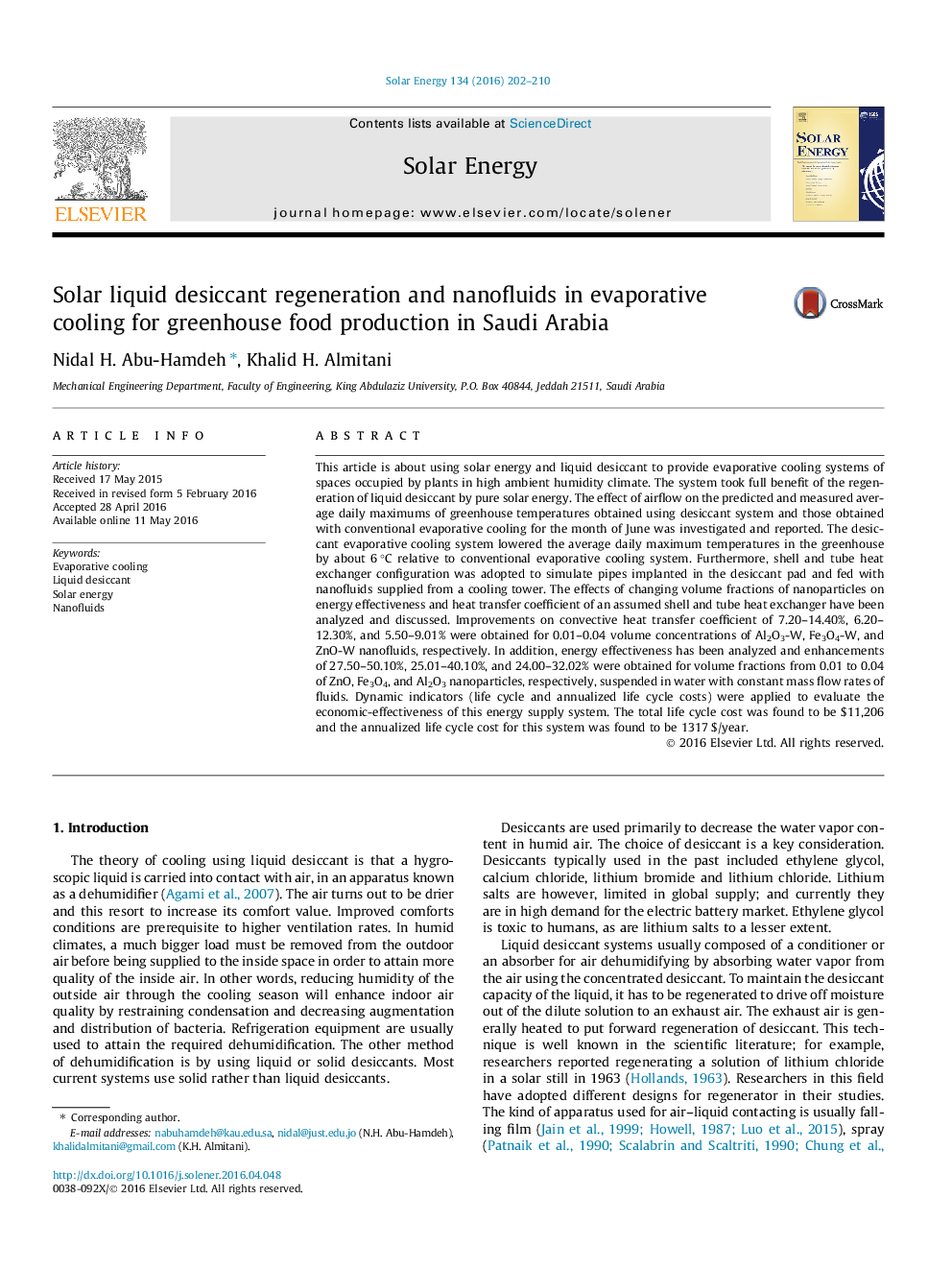| کد مقاله | کد نشریه | سال انتشار | مقاله انگلیسی | نسخه تمام متن |
|---|---|---|---|---|
| 1549293 | 1513084 | 2016 | 9 صفحه PDF | دانلود رایگان |
• Design of solar regeneration desiccant evaporative cooling for greenhouse in hot humid climates.
• The increase in air flow reduced the temperature of the greenhouse.
• The average daily maximum temperature in the greenhouse was lowered by about 6 °C.
• Highest range of heat transfer coefficient enhancement (7.20–14.40%) was produced by Al2O3-W nanofluid.
• Highest enhancement (27.50–50.10%) of energy effectiveness was obtained by using ZnO-W nanofluid.
This article is about using solar energy and liquid desiccant to provide evaporative cooling systems of spaces occupied by plants in high ambient humidity climate. The system took full benefit of the regeneration of liquid desiccant by pure solar energy. The effect of airflow on the predicted and measured average daily maximums of greenhouse temperatures obtained using desiccant system and those obtained with conventional evaporative cooling for the month of June was investigated and reported. The desiccant evaporative cooling system lowered the average daily maximum temperatures in the greenhouse by about 6 °C relative to conventional evaporative cooling system. Furthermore, shell and tube heat exchanger configuration was adopted to simulate pipes implanted in the desiccant pad and fed with nanofluids supplied from a cooling tower. The effects of changing volume fractions of nanoparticles on energy effectiveness and heat transfer coefficient of an assumed shell and tube heat exchanger have been analyzed and discussed. Improvements on convective heat transfer coefficient of 7.20–14.40%, 6.20–12.30%, and 5.50–9.01% were obtained for 0.01–0.04 volume concentrations of Al2O3-W, Fe3O4-W, and ZnO-W nanofluids, respectively. In addition, energy effectiveness has been analyzed and enhancements of 27.50–50.10%, 25.01–40.10%, and 24.00–32.02% were obtained for volume fractions from 0.01 to 0.04 of ZnO, Fe3O4, and Al2O3 nanoparticles, respectively, suspended in water with constant mass flow rates of fluids. Dynamic indicators (life cycle and annualized life cycle costs) were applied to evaluate the economic-effectiveness of this energy supply system. The total life cycle cost was found to be $11,206 and the annualized life cycle cost for this system was found to be 1317 $/year.
Journal: Solar Energy - Volume 134, September 2016, Pages 202–210
